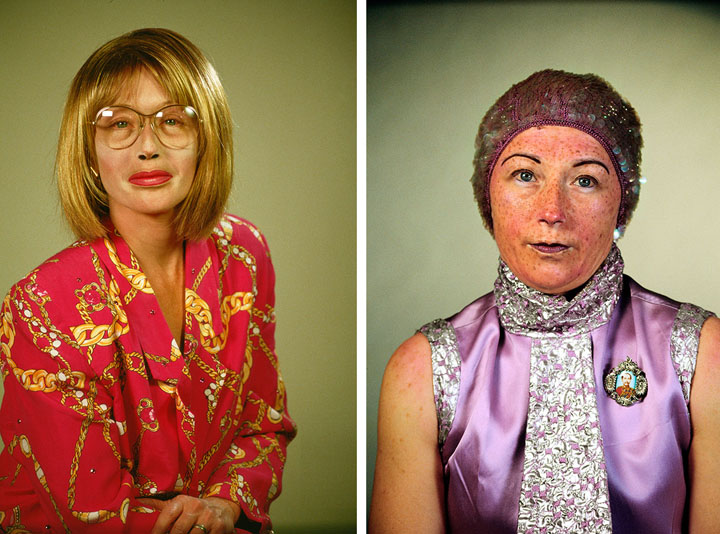.
Our current Cindy Sherman exhibition surveys the American artist’s work from 2000 to now. In the 1980s, Sherman became famous for making theatrical photographs of herself. But then she went AWOL, photographing stand ins instead: mannequins and dolls, prostheses and masks. She retreated, as if allergic to her signature idea. In 2000, however, she returned to photographing herself, and she has been photographing herself as characters ever since. So, the Sherman idea got a second wind, but in a different moment, without the burden of the feminist critiques that seemed so crucial in the early days of the mission. Back then, Sherman’s work was cast as a critique of prescriptive mass-media images. But, when I look at the Head Shots (2000–2) now, they don’t suggest mass-media representations, but studies of the kinds of real women that aspire to live up to them and/or fail to. So, am I laughing at stereotypes or at actual women? Standing in the Head Shots room at City Gallery, I scan female faces, comparing, contrasting. I rank them by attractiveness; distinguish them by class and age. I separate the kempt from the feral, those who try too hard from those who should try harder. Sometimes I’m dismissive, sometimes sympathetic, sometimes both. Plus, I enjoy more specific associations: if one study recalls a nutty Carol Channing, another could be of a young Hillary Clinton. Every detail feels like a symptom. In the twenty-first century, Sherman’s work seems keyed less to feminism, more to social satire and caricature. She invites us to judge books by their covers—a guilty pleasure. Don’t miss it. (Cindy Sherman, City Gallery Wellington, until 19 March 2017.)
